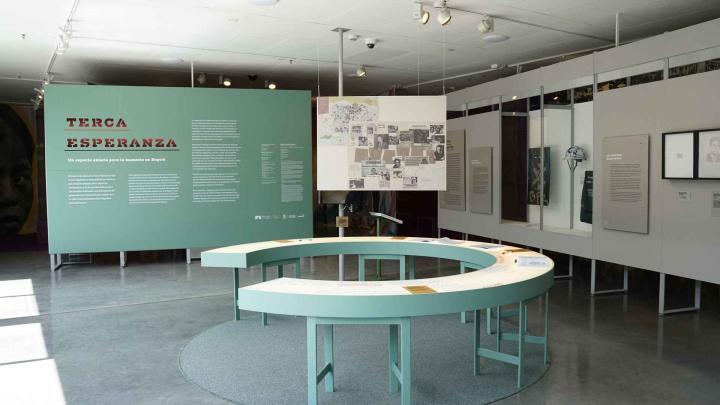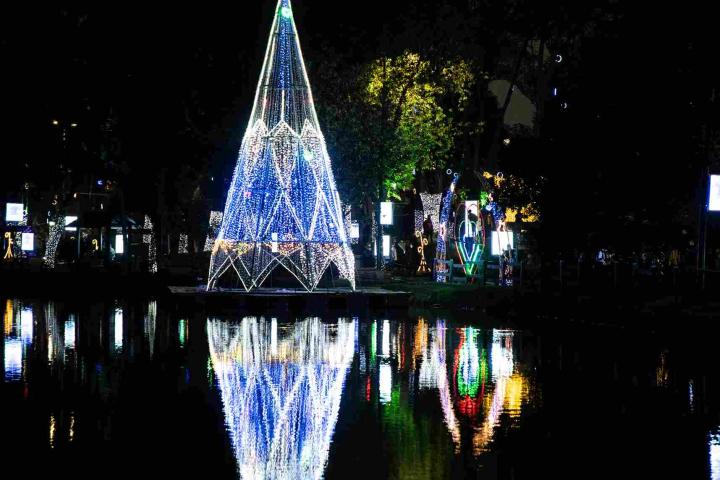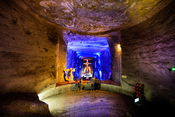The COP-16, the most important event on climate change and biodiversity in the world, is just a few days away. It will take place in Cali from October 21 to November 1. Around 12,000 attendees from 190 countries are expected, including ten heads of state, 103 environment ministers, and 196 United Nations delegations.
If you are attending and will be traveling to and from Bogotá, you should be aware that the city offers numerous nature tourism attractions for you to explore.
The Colombian capital holds an unexplored treasure: 75% of our territory is rural, including preserved wetlands, urban parks, hiking trails, lakes, waterfalls, and several paramos. The most important of them is Sumapaz, the largest in the world. It is home to centenary frailejones —a plant that only grows in high temperatures, like ours— of animals such as the spectacled bear and hundreds of bird species, including several endemic ones. Sumapaz is a paramo system that supplies most of the water consumed in the city, and it is a true green jewel.
If you have limited time and don't want to travel too far, consider visiting the José Celestino Mutis Botanical Garden. It is responsible for managing the vegetation of the capital and features a network of circuits that replicate the ecosystems of the country, particularly the high Andean and paramo ecosystems.
![]()
Alternatively, you can visit one of our 15 wetlands, which are like oases amidst buildings and residential areas. Santa María del Lago, La Conejera, and El Burro are some of the wetlands you can explore. Another option is the urban parks like Simón Bolívar, Los Novios, and Timiza, which serve as green spaces within the city, offering trails, forests for walking, and lakes for boating. If you're short on time and unable to go to a restaurant, consider having an impromptu picnic in one of these parks.
For hiking lovers, the trails of the eastern hills provide an opportunity to enjoy fresh air and breathtaking views of Bogotá. You can also explore forests and observe birds of various sizes, colors, and plumages at over 3,000 meters above sea level. You can also visit La Vieja Creek, located in the crowded Chapinero neighborhood.
There are also some bicycle touring routes. One of them is the Frailejón Trail, which starts from the Usme locality and crosses the impressive natural and rural landscapes of Chipaque, Ubaque, Choachí, Une, La Calera, and other municipalities of Cundinamarca. You don't need to worry about the bike; we can provide one for you here.
Our surrounding paradises
Dozens of natural attractions are part of the Bogotá Region circuit. One hour from Bogotá, there is a natural wonder located under the ground: the Salt Cathedral. It is locatedd in the neighboring municipality of Zipaquirá and is a system of sinkholes where salt was once extracted. It has turned into a destination that embraces the Catholic faith with a circuit evoking the sacred Stations of the Cross.
An hour and 20 minutes from here (an hour and 40 minutes from Bogotá, on average), you will reach the Siecha Lakes. The name Siecha means "Man of water" in the Muisca language. These lakes are located in the rural area of the neighboring town of Guasca, inside the Chingaza National Natural Park. These three water mirrors were considered sacred by our ancestors, who held ceremonies and made offerings there. Like the best places, it is not just around the corner. You'll need to hike uphill for about an hour, possibly longer, depending on weather conditions and the hikers' pace. You'll also need to endure the cold, climb the mountain, and walk around frailejones to reach the wonders of Fausto, America, and Siecha.
If you plan to visit the Sumapaz Paramo, it's important to note that tourism is not allowed in this National Natural Park. There is only one designated area for observation: the viewpoint of the Chisacá Lake. The lake reflects a blue or green color on sunny days and turns gray when the sun is hidden by clouds. However, simply traveling along the road to this beautiful location near the capital, adorned with numerous frailejones and crops of potatoes, fruits, and vegetables, will make the trip worthwhile.
The Guatavita Lake, located within the Bogotá Region circuit, is another sacred water mirror for our Muisca ancestors. If you depart from Bogotá, you can reach the lake in approximately two hours. Once there, you will have to walk to the viewpoint of the stage where the El Dorado Legend occurred. The guides will share various versions of the story. One of them describes how the Indians, who were the guardians of the territory, would wrap the deceased in sheets, place them in a canoe, and surround them with candles, flowers, jewelry, and treasures before sinking the canoe with everything on it. It is also said that the cacique was covered in gold, which fascinated the Spanish conquistadors. A raft made of finely woven gold serves as evidence of this story, and it can be seen at the Gold Museum.
This way, Bogotá will enchant you with its natural treasures and its stories.
Welcome to Bogotá, the home of environmentalists and the home of all.
If you would like more information about the city's nature plans, please visit www.visitbogota.co or download the Visit Bogotá app on your cell phone.











